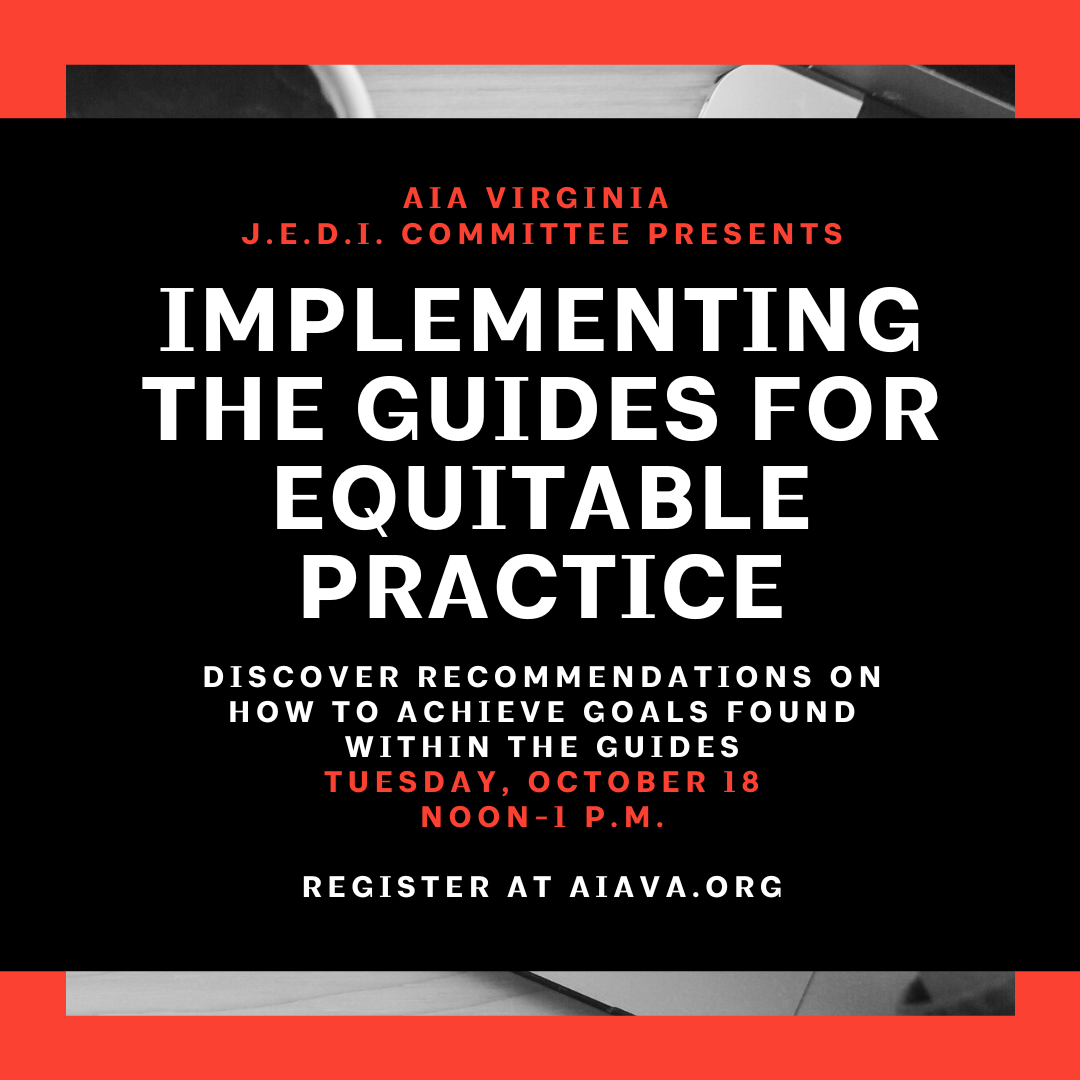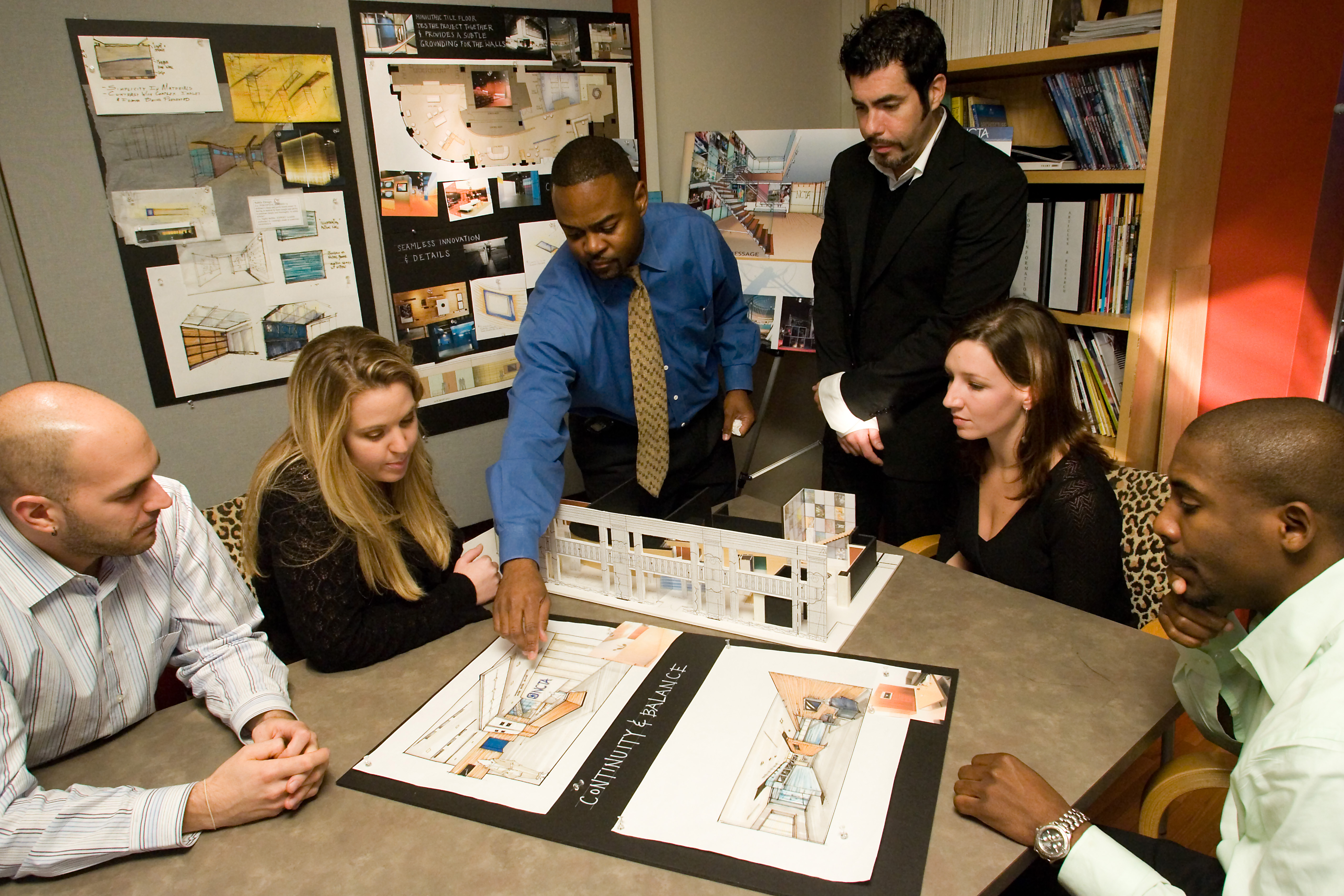The AIA Guides for Equitable Practice make the moral, business, ethical, and societal cases for equitable practice in the profession of architecture. They provide key insights to hear insights on how the guides can change firm culture and create an environment that nurtures retention and inspires limitless thinking. In this course, participants will discover recommendations on how to achieve goals found within the Guides through utilization in practice and as a resource in connecting these goals with the work of their firm/organization.
1 LU | Elective
Free
Download the Guides for Equitable Practice
Learning objectives
- Explain why goals and motivations play an important role in equity, diversity, and inclusion work.
- Compare and contrast equity as an input with diversity as an output
- Utilize the AIA Guides as a resource by using a variety of strategies to engage the material
- Navigate through multiple AIA Guides to better understand a single complex issue
- Connect the work of their firm with goals or prompts in the Guides
The presenter
Renée Cheng, FAIA
Renée Cheng was named dean of the College of Built Environments in January 2019. Previously, Cheng served as head of the School of Architecture at the University of Minnesota.
Cheng is a leader in the American Institute of Architects (AIA) and advocates for equity in the field of architecture and in the practices related to the built environment. Recently, Cheng led the research effort for the AIA Guides for Equitable Practice.
Known for her pedagogical skill in designing classes and programs that empower students and integrate practice with academia, Cheng has twice won the AIA Practice Leadership Award. She has been named one of the top 25 most admired design educators in the U.S. by DesignIntelligence and an Association of Collegiate Schools of Architecture Distinguished Professor and was elevated to the AIA College of Fellows.
A licensed architect, her professional experience includes work for Pei, Cobb, Freed and Partners and Richard Meier and Partners before founding Cheng-Olson Design.


